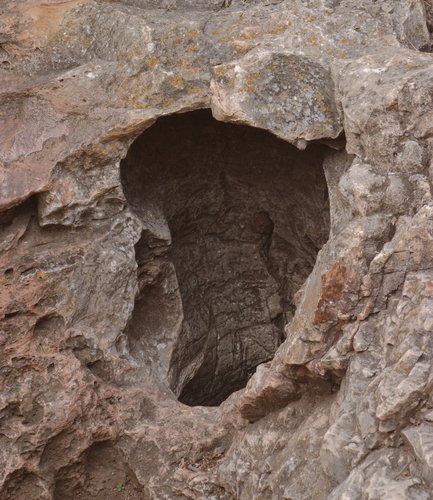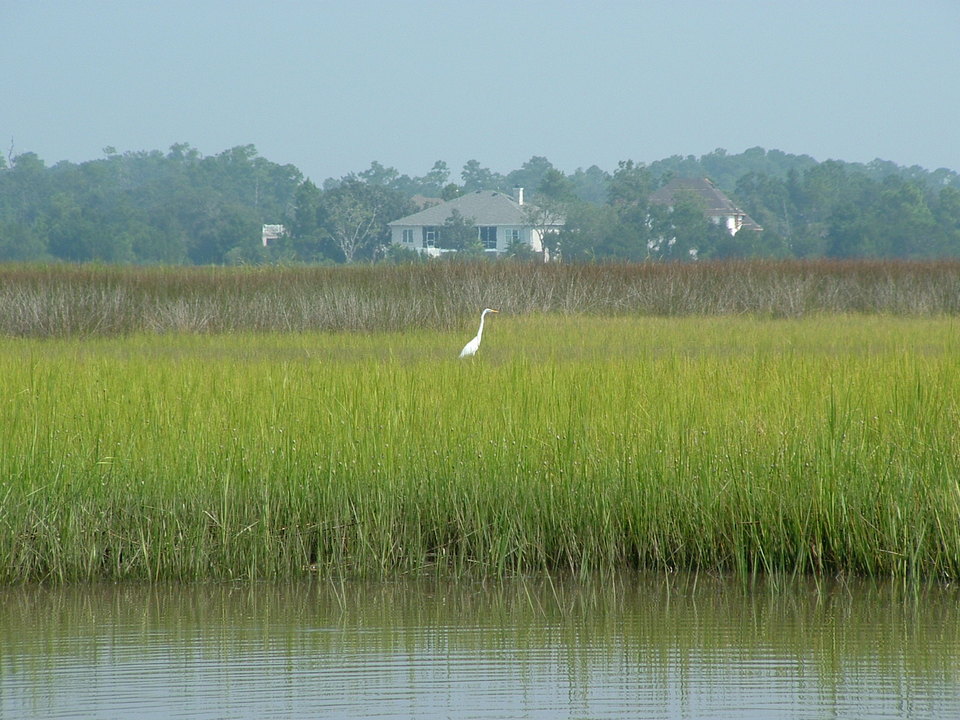Hello, super smart scientists!
What are we doing today?
Today, we have 2 goals:
- Content goal: We will use what we know about habitats to fill out a crossword puzzle by matching a habitat with its description.
- Language goal: We will use our reading comprehension strategy, context clues, to help us match each habitat with its description.
But first, let’s review what we know about habitats!
- What is a habitat? A habitat is the place a plant, animal, insect, or other living thing, lives in nature.
- What are some examples of habitats? Some examples include: pond, wetland, desert, prairie, cave, and woodland habitats.
- Different habitats have different kinds of plants, animals, insects, and other living things that live there.
Now let’s review what we know about six different habitats:

Desert habitat
· Very dry
· Can be hot or cold
 Pond habitat
Pond habitat· Small area of water
· Water is fresh, not salty
· Water does not flow (move)

Cave habitat
· A large hole
· Could be underground, in the side of a mountain, or under a cliff

Wetland habitat
· A lot of water in the dirt
· Some parts of the habitat are under water, some are on land

Prairie habitat
· Mostly flat land, some hills
· Covered with tall grass

Woodland habitat
· Land covered with many trees and plants
.................................................................................................
Now, let's review context clues...
- Context clues are words or pictures that give us information to help us understand what we are reading.
- We are kind of like detectives, because we use clues from the context (words close by) to help us figure out words we don't know.
Example: Decide which habitat matches this description by looking at the context clue "frozen".
The ________habitat is an area where the ground is always frozen.
Arctic tundra habitat or tropical rainforest habitat
- Which of these two habitats would have frozen ground? Tropical or arctic?
- Think about what you know about things that are frozen-- frozen things are very COLD!
- Is a tropical rainforest habitat a very cold place? No, tropical rainforests are very hot places! So that can't be the answer....
- What about an arctic tundra habitat? Are they cold? Yes, we learned that arctic tundra habitats are very cold, so that is the correct answer!
Here is another example:
The _______ habitat covers 70% of the earth and is made up of salt water.Hm...which habitat could this sentence be describing?
Does it describe a mountain habitat, lake habitat, or ocean habitat?
Use the information the sentence gives you to decide. This habitat covers a lot of the earth and is made up of salt water.
- Does that describe a mountain habitat? No, mountains are not made up of salt water and do not cover most of our planet.
- How about a lake habitat? No, lakes do not cover most of the earth, and are not made up of salt water.
- Does the sentence describe an ocean habitat? Yes! Oceans cover about 70% of the earth and are made up of salt water.
Context clues are great because they give us information that helps us understand what we are reading.
~~~~~~~~~~~~~~~~~~~~~~~~~~~~~~~~~~~~~~~~
After you finish reviewing the habitats here, click here to go to our
Richardson Nature Center wiki page and complete the habitats crossword puzzle.

----------------------------------------------------
Nice work, scientists!
We are going to be so prepared when we go to the Richardson Nature Center. You should be proud of how well you used the clues to get your answers!
Happy puzzling! :-)
Ms. Wilson
////////////////////////////////////////////////////
Lesson Overview:
Students: 3rd grade ELLs, of varying language and cultural backgrounds
English language level: Intermediate ESL
Lesson time: 1 hour in classroom with laptops (one per student, includes one pair of headphones per laptop)
Class location environment: This lesson will be taught in the ELL or mainstream classroom, depending on the ELL model in place (pull out/collaboration). Each student will work individually, and will start by sitting down at an assigned laptop (which will be open to our class blog), reading over the start-up directions and checklist for the day, and getting started.
Lesson Review:
How will you use this resource to meet the needs of your instructional purposes?
This lesson has two goals:
- Content goal: We will use what we know about habitats to fill out a crossword puzzle by matching a habitat with its description.
- Language goal: We will use our reading comprehension strategy, context clues, to help us match each habitat with its description.
This lesson draws on the use of a blog, wiki and a HotPotatoes crossword application.
The blog serves to activate prior knowledge and build background by reviewing the concept of habitats. It defines the word and gives examples of different habitats, including a short description and picture of each. This review will help prepare students to fill in the crossword puzzle later in the lesson.
The blog also reviews the reading comprehension strategy of using context clues by giving the definition of the strategy and walking students through two related examples of how to use context clues to match a habitat with its description.
The blog then directs students to click on a link to get to our Richardson Nature Center wiki page, which is the host site for the crossword puzzle. Once students are on the wiki page, they will need to scroll down slightly to get to the crossword puzzle link, which is labeled and has an image of a crossword puzzle next to it.
The HotPotatoes crossword puzzle is set up with the step-by-step directions at the top, along with a word bank of all six habitat vocabulary words students will use. Students will need to click on a number on the crossword puzzle to see the clue for that word. They will need to use the context clues strategy to help them match the description with its habitat. When they finish the crossword puzzle, they click on “check” to check their answers. In the paid version of HotPotatoes, you can set it up so that the students’ scores are sent to your email…I think this is a cool idea and a good way to collect some informal assessment data.
By the end of the lesson, students will have completed a crossword puzzle using the context clues strategy to help them match a habitat with its description.
What handouts or directions will you provide students to focus learning and adapt this resource for your instructional purposes?
Each student will have the start-up directions and a checklist on a half sheet of paper:
Sit down at your assigned laptop. Read the information for Lesson 4 on the class blog. When it tells you to, go to our class wiki page and then click on the link to the habitats crossword puzzle. Complete the habitats crossword puzzle and then click “check” to check your answers. Raise your hand when you finish, and I will come around to hear how you did.
Checklist: (to be marked with an “x” when completed) I am sitting at my assigned laptop. I read the goals for this lesson. I understand what habitat means. I understand what context clues are and how they can help me when I am reading. I read all of the information for Lesson 4. I read the directions for the habitats crossword puzzle. I finished the crossword puzzle and clicked on “check”. I raised my hand to report back to Ms. Wilson.
Are the format, organization, design and language level of this resource appropriate for your instructional goals?
Format and design:
I think the blog’s reading format is appropriate for the goals of this lesson because it is separated into short, thematic text sections with pictures and text size to scaffold and aid in comprehension. The design of the Richardson Nature Center’s wiki page leads students to the link for the habitats crossword puzzle. The format of the HotPotatoes crossword puzzle is fairly straight-forward, with the directions and the word bank on the top of the page and the puzzle below. If the student does not read the directions carefully, they might be confused that the clues are not visible on the page (they have to click on the number to see its clue).
Organization:
The blog’s organization is very sequential, based on the goals and background knowledge needed to complete the habitat and context clues assignment. The organization of the wiki is fairly straight-forward; it leads students directly to the link for the habitats crossword puzzle. The organization of the crossword puzzle is also quite easy to follow, with the only complication being that students need to click on a number in a crossword box to see the clue for that number.
Language level:
I think the language level of the blog, wiki page, and habitats crossword puzzle is appropriate for the targeted students, as most of the words are tier 1 or tier 2. More challenging words or concepts, such as the different kinds of habitats and “context clues”, are scaffolded with definitions, examples and visual aids.
What are the potential problems, either language based or technical, that you may need to troubleshoot or prepare for?
Language-based problems: The success of this lesson depends on students’ reading comprehension the concept review and the crossword directions. Although I had tried to be intentional about providing visual scaffolds and examples, and breaking up text into smaller, related chunks, some students still might not make the connection between the context clues strategy and the crossword puzzle clues. I will be walking around the room to check on students, and will ask reminding/redirecting questions if I see some students having difficulty.
Technical problems: In order for the crossword puzzle to work, the pop-up blocker has to be turned off (or at least has to allow pop-ups for this website). This could be a slightly tedious task for the teacher to get set-up before the students arrive, but should not be a problem once the blocker is set to allow pop-ups from the website.
Hi Andrea,
ReplyDeleteThanks for sharing such a well thought out lesson. You seem to have covered everything with your review of habitats and context clues. In particular I found it inspired that you combined the context clue strategy practice with the crossword puzzle as crosswords often rely heavily on definitions. The feeling tone is very upbeat and encouraging. I followed your directions and they were very clear and concise. I had no trouble completing the activity.
For those students who struggle with reading, I might want to do the context clue review as a modeled "think aloud" instead. Even though we think of context clues as a reading strategy, it is an aural and visual strategy as well. This might be a way I could reach those students who shy away from plowing through lots of text.
Next time I think of doing a crossword, I'll remember context clues! Thanks for a great lesson!
O.K. Something I didn't like...
ReplyDeleteWhen it was finished I thought: "Is this it?" ha ha
You thoroughly entertained me. Beautiful job. Why?
Well...the minute I opened your BLOG I was told what my 'goals' were. So no time for me to be bored or wondering: "Why am I here?" Eveything was there.
Then your pictures. Amazing! Hey! A picture says more than a thousand words. So all this tells me that a lot of prep went into this Lesson Planning. It was not something you threw together but very professional.
I also liked the 'fill-in-the-blank' exercises as it reinforces what you studied or what you are on. And then your crossword as a bonus which all kids like.
You did a fantastic job and I am going to steal a couple of ideas from you. Cheers!
ARAMIS